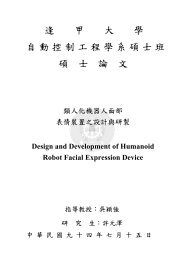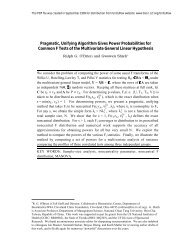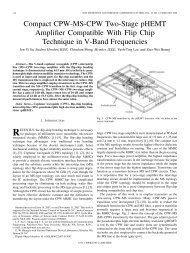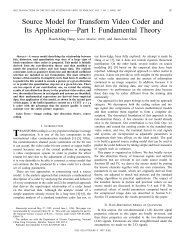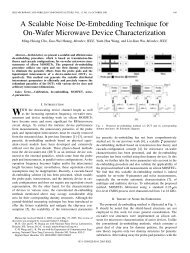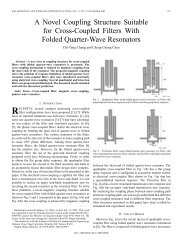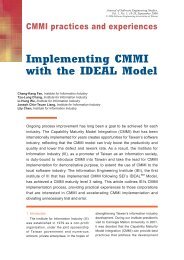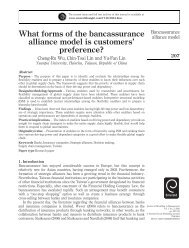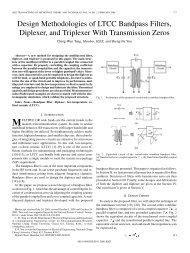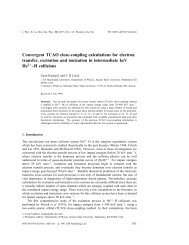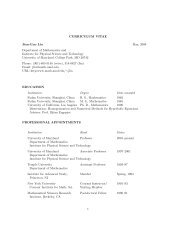A Probabilistic Approach to Geometric Hashing using Line Features
A Probabilistic Approach to Geometric Hashing using Line Features
A Probabilistic Approach to Geometric Hashing using Line Features
Create successful ePaper yourself
Turn your PDF publications into a flip-book with our unique Google optimized e-Paper software.
CHAPTER 2. PRIOR AND RELATED WORK 13<br />
Thompson and Mundy ë52ë describe a system for locating objects in a relatively unconstrained<br />
environment. The availability of a three-dimensional surface model of a polyhedral<br />
object is assumed. The primitive feature used is the so-called vertex-pair, which consists<br />
of two vertices: one is characterized by its position coordinate; the other, in addition <strong>to</strong><br />
position coordinate, includes two edges that deæne the vertex. This feature serves as the<br />
basis of computing the aæne viewing transformation from the model <strong>to</strong> the scene. Through<br />
the voting in the transformation space, candidate transformations are selected.<br />
A common critique about this paradigm lies in that as the scene is noisy, the accumulation<br />
of ëevidences" contributed by random noises can possibly result in false alarms.<br />
Grimson and Huttenlocher ë22ë give a formal analysis of the likelihood of false positive<br />
responses of the generalized Hough transform for object recognition. However, we can use<br />
this paradigm as an early stage of processing èi.e., as a ælterè, followed by a scrutinized<br />
veriæcation stage.<br />
2.1.4 Consistency Checking and Constraint Propagation<br />
Many model-based vision schemes are based on searching the set of possible interpretations,<br />
which is usually combina<strong>to</strong>rially large.<br />
As in other areas of artiæcial intelligence, making use of large amounts of world knowledge<br />
can often lead not only <strong>to</strong> increased robustness but also <strong>to</strong> a reduction in the search<br />
pace that must be explored during the process of interpretation. It is usually possible <strong>to</strong><br />
analyze a number of constraints or consistency conditions that must be satisæed <strong>to</strong> make<br />
a correct interpretation. Eæective application of consistency checking or propagation of<br />
constraints during searching can often prune the search space greatly.<br />
Lowe ë41ë emphasizes the importance of viewpoint consistency constraint, which requires<br />
that the locations of all object features in an image be consistent with the projection<br />
from a single viewpoint. The application of this constraint allows the spatial information<br />
in an image <strong>to</strong> be compared with prior knowledge of an object's shape <strong>to</strong> the full degree<br />
of available image resolution. Lowe also argues that viewpoint-consistency plays a central<br />
role in most instances of human visual recognition.<br />
Grimson ë20ë extended his previous work RAF ë23ë <strong>to</strong> handle some classes of parameterized<br />
objects. He approaches the recognition problem as a searching problem <strong>using</strong> the



